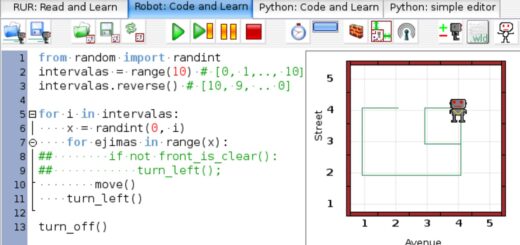The Machine Learning Beginner’s Guide
The Machine Learning Beginner’s Guide, The field of machine learning in computer science and data analysis is growing swiftly. It has the capacity to change how businesses operate and how we live and work.
However, implementing machine learning can initially seem challenging. With so many available tools, frameworks, and algorithms, where do you even begin?
In this post, we have offered a step-by-step explanation for applying machine learning. With you, we will go over programming fundamentals, machine learning concepts, and choosing a machine learning framework.
We will also provide guidance on how to experiment with machine learning, how to practice using it, and how to stay current with the latest developments in the field.
Whether you are a complete beginner or have some past programming experience, this article will help you get started on the intriguing topic of machine learning.
Is Python the ideal language for machine learning »
The Machine Learning Beginner’s Guide
To dive into and examine machine learning according to our demands, it is quite broad.
Study the Foundations of Programming
Prior to diving into machine learning, a solid programming foundation is essential. Some of the most popular programming languages for machine learning are Python, R, and Java.
Python is typically the language of choice for beginners due to its ease of learning and a large ecosystem of machine-learning libraries and tools.
There is a tonne of internet tools available to learn to program. Codecademy, Coursera, and Udacity are a few well-known online education platforms.
Python Ultimate Cheat Sheet for Data Science »
Learn About the Fundamentals of Machine Learning
Once you have a firm grasp of programming, it’s time to begin learning about the principles of machine learning.
This includes concepts like supervised and unsupervised learning, neural networks, and decision trees.
There are several free online resources available for studying the basics of machine learning.
A few well-liked options include the book “Python Machine Learning” by Sebastian Raschka, Andrew Ng’s machine learning course on Coursera, and the website Kaggle, which sponsors machine learning competitions and provides educational resources.
Choose a framework for machine learning
After reviewing the machine learning fundamentals, it’s time to choose a framework.
Machine learning frameworks, a collection of libraries and programs, streamline the development and use of machine learning models.
A few well-known machine learning frameworks are TensorFlow, PyTorch, and Scikit-Learn.
TensorFlow and PyTorch are well-known alternatives for deep learning, whereas Scikit-Learn is a good option for more traditional machine learning algorithms.
Best Books to learn Python for Beginners »
Create Machine Learning Models Now
Now that a machine learning framework has been developed, it is time to start creating machine learning models.
This comprises selecting a dataset, cleaning up the information, selecting a model, honing the model, and testing it.
Several publicly available datasets can be used to create machine-learning models.
Such well-known datasets include the MNIST dataset for image classification, the Iris dataset for classification, and the Boston Housing dataset for regression.
Continue to study and practice
In the fast-evolving field of machine learning, there is always fresh knowledge to acquire. Develop your programming and machine learning skills further and stay current with market developments.
To keep up with the latest recent developments in machine learning, check out the Machine Learning Masters blog, the Google AI blog, and the arXiv preprint site.
Observe real-world examples to learn
One of the best ways to learn machine learning is to look at real-world examples. This could provide you with knowledge about how machine learning is used in practical situations and inspiration for your own projects.
Real-world examples can be found in academic publications, commercial case studies, and open-source initiatives on platforms like GitHub.
Test out various models and algorithms
Models and algorithms for machine learning come in a broad range, and testing with different approaches will help you understand their benefits and drawbacks.
Support vector machines, decision trees, logistic regression, random forests, and neural networks are a few examples of common machine learning models and algorithms.
Practice data analysis and visualization
Models and algorithms for machine learning come in a broad range, and testing with different approaches will help you understand their benefits and drawbacks.
Support vector machines, decision trees, logistic regression, random forests, and neural networks are a few examples of common machine learning models and algorithms.
Launch a machine learning project of your own
Once you have a firm understanding of machine learning and have practiced building models, it is time to launch your own project.
This project could be for personal, professional, or educational purposes.
Look for a dataset that tackles a topic that interests you after selecting one. The next step is to build and evaluate machine learning models in order to find a solution.
Why Python is an Important and Useful Programming Language »
Conclusion
In conclusion, machine learning is a fantastic technology that can completely transform numerous industries and transform the way we live and work.
By following the guidelines in this article, you can begin studying and researching this intriguing subject.
If you have a solid background in programming, a grasp of the principles of machine learning, and the necessary tools and resources, you can start building your own machine-learning models and solving real-world problems.
Bear in mind that there is constantly more to learn because the subject of machine learning is developing.
Maintain your practice, exploration, and familiarity with the most recent developments in the sector.
With time and effort, you can become a skilled machine learning practitioner and have a substantial impact on your profession.





